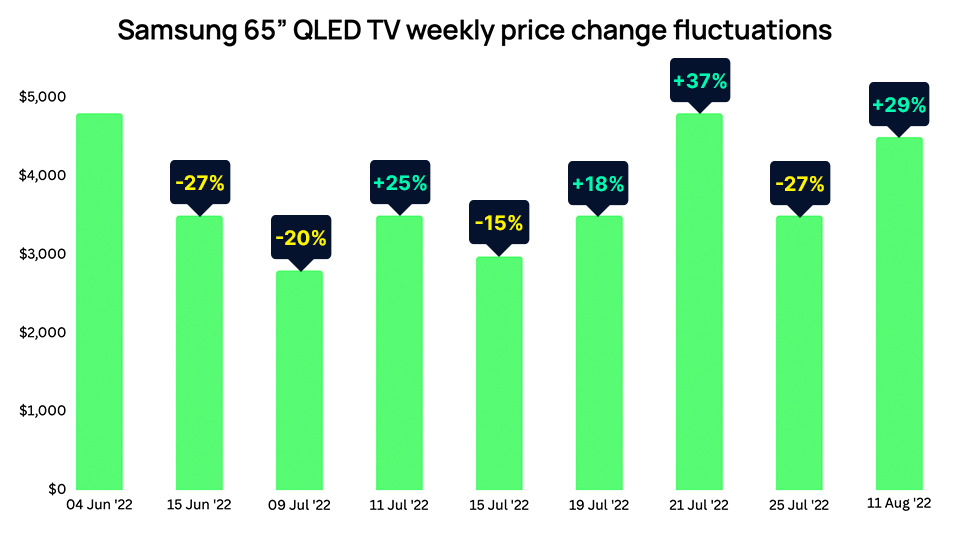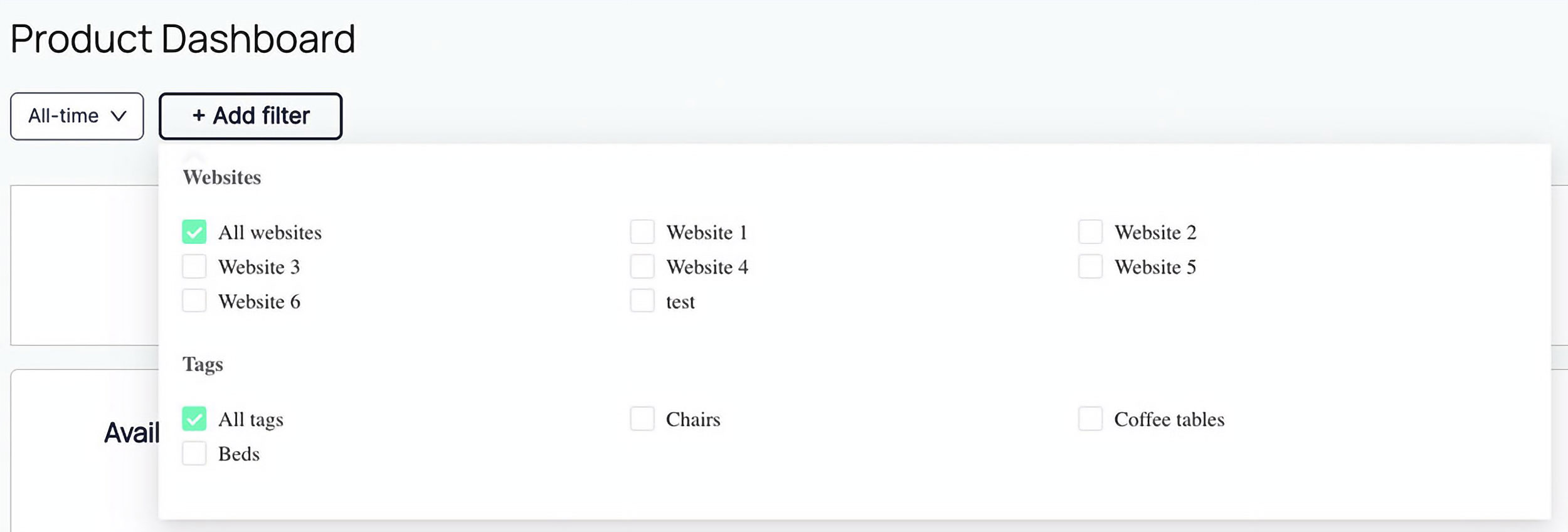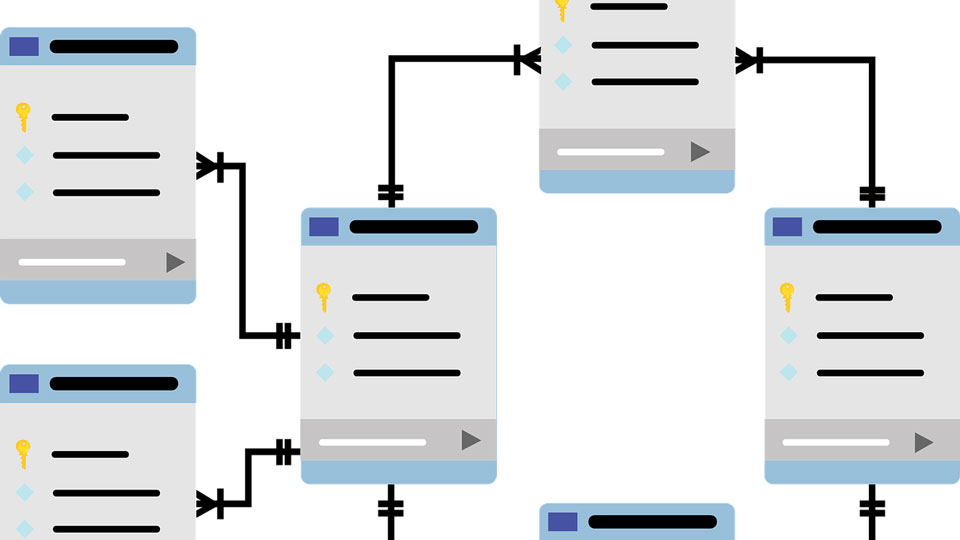
Competitor price tracking helps eCommerce professionals stay on top of competitor pricing updates and offer the most optimal prices for products at any given time.
Saying that, price tracking isn’t about simply checking and beating product prices – a loss leader strategy isn’t practical for most businesses. What competitive price monitoring is really about is achieving greater profitability through the effective use of data.
What are competitor price monitoring tools?
Competitor price monitoring tools, also sometimes called competitor price monitoring software, are automated solutions that help businesses track and analyse the prices of their competitors. By gathering data from sources such as eCommerce websites, marketplaces, and online retailers, these platforms provide both a snapshot of competitors’ prices at any given moment, and insights into pricing changes over time.
Competitor price tracking tools play a crucial role in helping businesses make informed pricing decisions, stay competitive, and respond quickly and effectively to changes in the market. Knowing what your competitors are selling – and for how much – is also essential for defining category changes, negotiating with suppliers, and timing new product launches or discounts.
If you’re not already using a price monitoring tool to track your competitors, here are four compelling reasons why you should get started today.
1. Tracking competitor prices lets you optimise your pricing strategy
Retail price monitoring software tracks changes to your competitors’ prices automatically, allowing you to identify their pricing strategies and react in near real-time with dynamic pricing updates. If a competitor lowers their prices or offers discounts, you can assess the impact on your own business and adjust your approach accordingly.
Competitor price monitoring tools are especially valuable for large online retailers that sell third-party products. Potential customers can buy a branded product from any of the multiple stores that offer it, and 82% of online shoppers compare prices before buying.
In other words, your customers are already price monitoring – so you should be, too.
A simple price tracking example
DataNoodle set our competitor price monitoring software to track a Samsung 65” QLED TV from June to August 2022 on one of the biggest online electronics stores in Australia. We found significant weekly price changes within a two-month period, with drops of -25% in one week and rises of +37% in the next.

Having this level of price intelligence at your disposal can help you stay competitive by acting quickly to attract price-sensitive customers, while maintaining your profit margins over time. You’ll be able to more assertively decide on the best price margin to work in that’s not too low to hurt profits, nor too high to scare off potential buyers.
Having said that, it doesn’t mean you have to offer the lowest price if that‘s not aligned with your business strategy. Other factors besides price play a role in a consumer’s purchasing decision. Nonetheless, competitor price monitoring is a helpful benchmarking tool that keeps you aware of your position in the market.
2. Price tracking lets you identify market trends and opportunities
Price monitoring enables you to spot market trends and fluctuations. This information can be valuable for making data-driven business decisions, such as launching new products, forecasting expected market life cycles, or adjusting your business strategy to align with market conditions.
And because competitor price tracking solutions usually also monitor stock availability data, you’re positioned to take advantage of opportunities such as a major competitor going out of stock on a certain product. You could react to that by raising your price for that product, knowing that its availability has become scarcer.
By having your competitors’ pricing data on hand, you can also evaluate your own value proposition within the market. If you offer exclusives, additional features, better quality, or superior customer service, you can justify higher prices or differentiate yourself from competitors who offer similar products.
3. Price monitoring software lets you effectively analyse data
Data collection is just the first step. Once you have your price tracking data, what can you do with it? You could pass it off to a data analyst who can decipher the numbers and tell you what you need to know to confidently make decisions – a time-consuming exercise that can depend on the analyst’s schedule of work and willingness to help you ahead of other teams and departments.
Or, if you’ve gotten your head around a few advanced Excel formulas, you might be able to do the data analysis yourself. But formulas don’t come naturally to most of us, and there’s always the chance that one of them could have a manual error that will throw off everything you’re trying to do.
The best price monitoring tools don’t simply collect and aggregate data. They allow you to analyse it yourself – without having to be a data analytics expert or Excel master.
Analysing competitor pricing with DataNoodle
With a free DataNoodle account, you can set up your own custom product tags to easily segment your data set and find what you’re looking for fast.

Let’s say for example that you’re in the furniture industry and you want to see the latest pricing updates for chairs across all your tracked websites. You would simply go to your Product Dashboard, set a date range for your data set, then select the “All websites” and “Chairs” checkboxes to bring up exactly what you need to see in your Product Data table.

Your Product Data table shows you at a glance the current prices of all the chair products you’re tracking, with the ability to filter by price, number of price changes, how much the current price changed from the previous one (as a percentage), and more. To go deeper, click on any data row to zoom into that specific product.
Learn more about our Price Monitoring tool.
4. Save cost, time, and sanity
If you’ve been competitor price tracking the manual way – that is, with you or an intern entering pricing updates on a spreadsheet – you probably started thinking about automated solutions from the minute you got started.
Manual competitor price monitoring and analysis is time-consuming, tedious, and prone to inevitable human error. It also takes valuable human resources away from other business activities. Really – wouldn’t you rather be doing something more fulfilling with your work hours than constantly checking after competitors’ pricing?
The truth is, that clunky spreadsheet can never compete with automated systems – at least not with their efficiency and scalability. Automated price monitoring software gives you a more complete data set that is accurate, acquired faster, and easily accessible for all stakeholders to leverage.
The best time to start competitor price tracking is now
To have competitively priced products and services in the market, you have to look at the competition. If you’re doing this without competitor price monitoring tools, then don’t waste any more time and aggravation.
DataNoodle is now available in Beta. We don’t offer a free trial – instead, you can set up a FREE account and use it for price monitoring for as long as you like! Only upgrade to a paid account (with additional tracking capabilities) when you decide it’s worth it.
